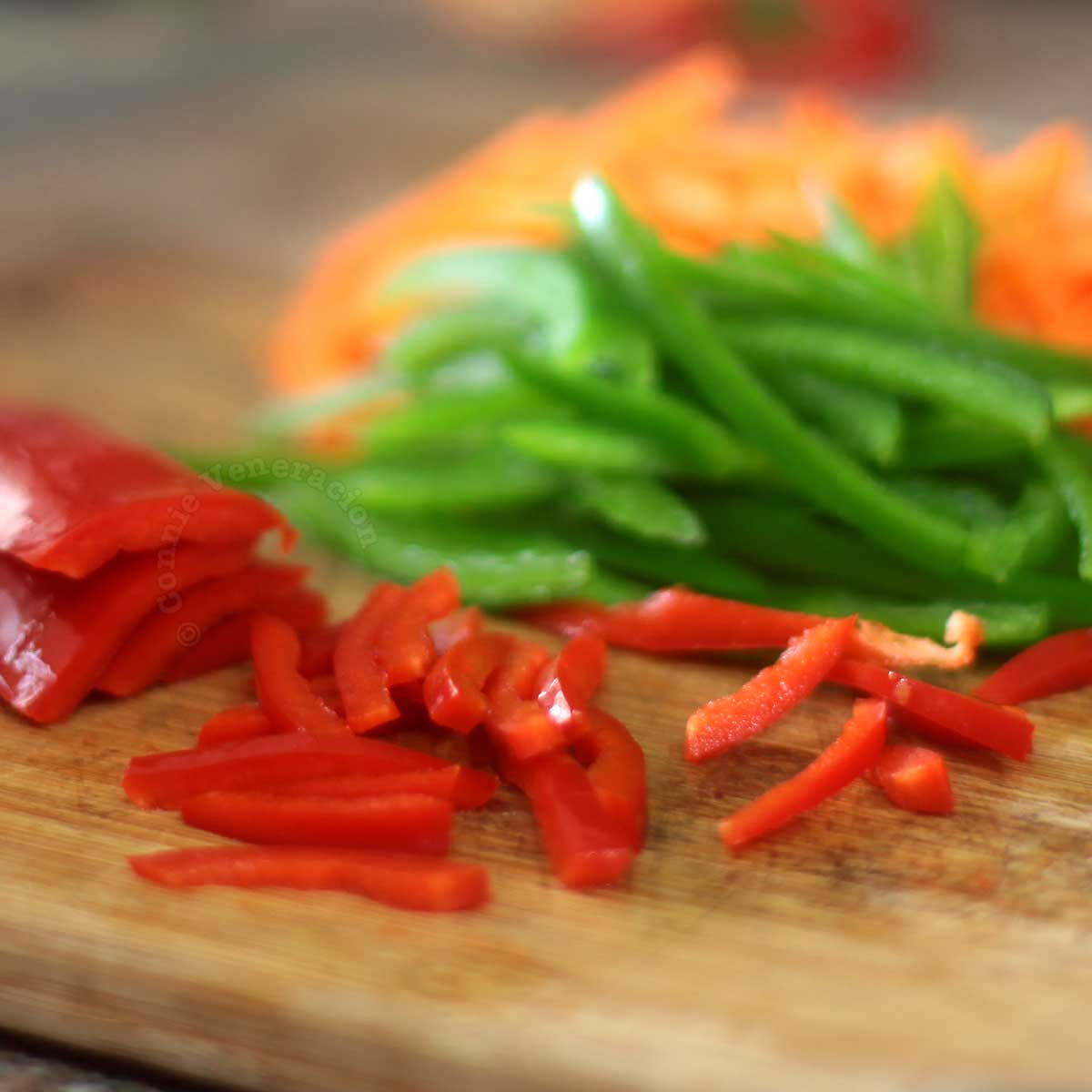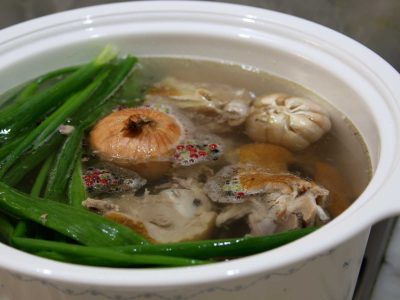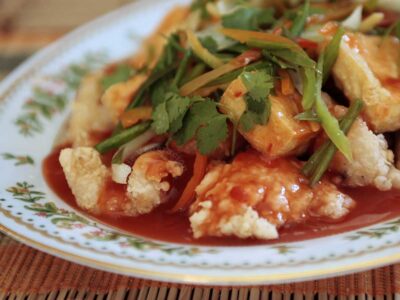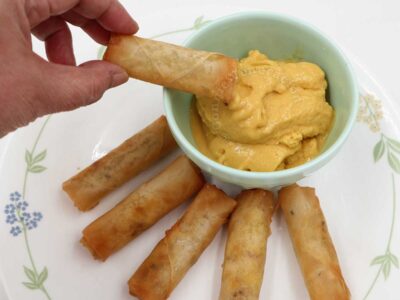Julienne is a French culinary knife cut that has been in use since the 1700s. When a recipe calls for julienned vegetables, it simply means that the vegetables need to be cut into “matchsticks”. The vegetable is cut into thin slices then each slice is cut into matchsticks.
The fastest, most efficient and most convenient way is to use a food processor. But if you’re just julienning a piece of carrot, do you really want to bother taking out the machine, snapping in the correct blade, washing, drying and then putting everything back again?
It’s easy enough to do the job manually and you’ll have only a knife and a cutting board to clean afterward. Besides, what kind of cook doesn’t possess the most basic knife skills?
In fine dining where appearance counts as much as the quality of the cooked food, the vegetable is first sliced then cut into squares of equal size. When these thinly sliced squares are cut into matchsticks, they come out equal in length, width and depth.
I don’t do that. Slice and cut the vegetable into squares, I mean. It’s wasteful. Unless you mean to make vegetable broth with the trimmings, what the heck are you going to do with them? Throw them away? Unthinkable. This is how we efficiently julienne vegetables with a knife and cutting board.
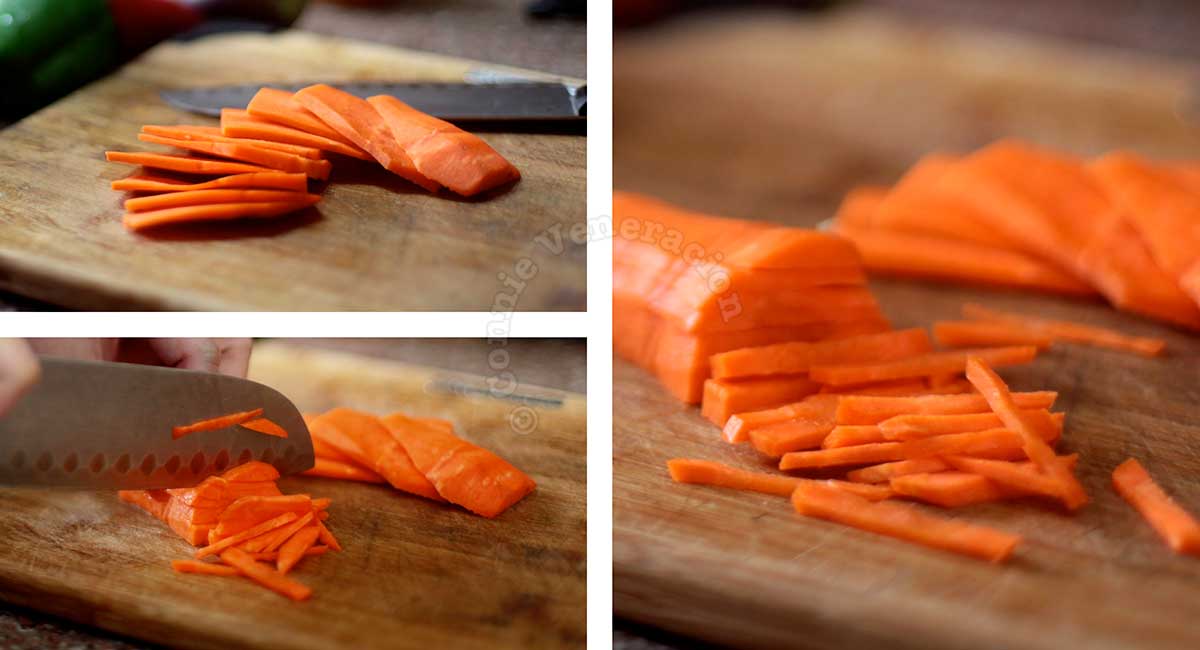
If the vegetable needs to be peeled, start by peeling it. Carrots, for instance, usually requires peeling. After the skin has been discarded, slice the carrot thinly — about an eighth of an inch or thinner. Take several slices, as many as you can conveniently manage, and stack them.With the fingers of one hand pressing down the stack of carrot slices, start cutting into strips as thin as the slices. And you have julienned your carrot.
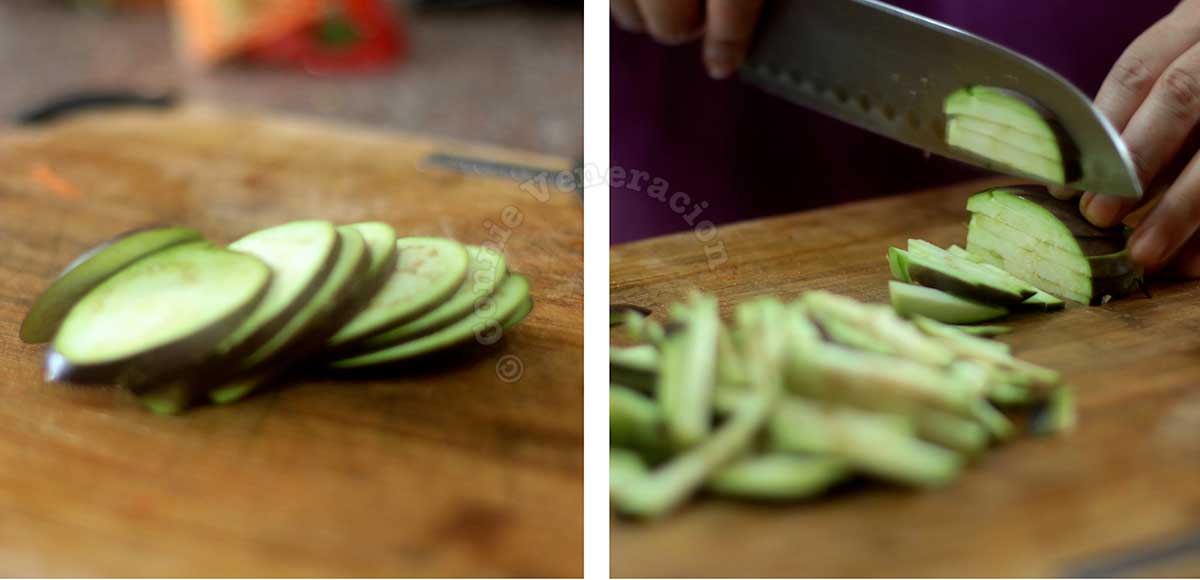
Any firm vegetable can be julienned. Eggplants can be julienned. As with the carrot, start by thinly slicing the eggplant. Then, stack the slices and cut into matchsticks.
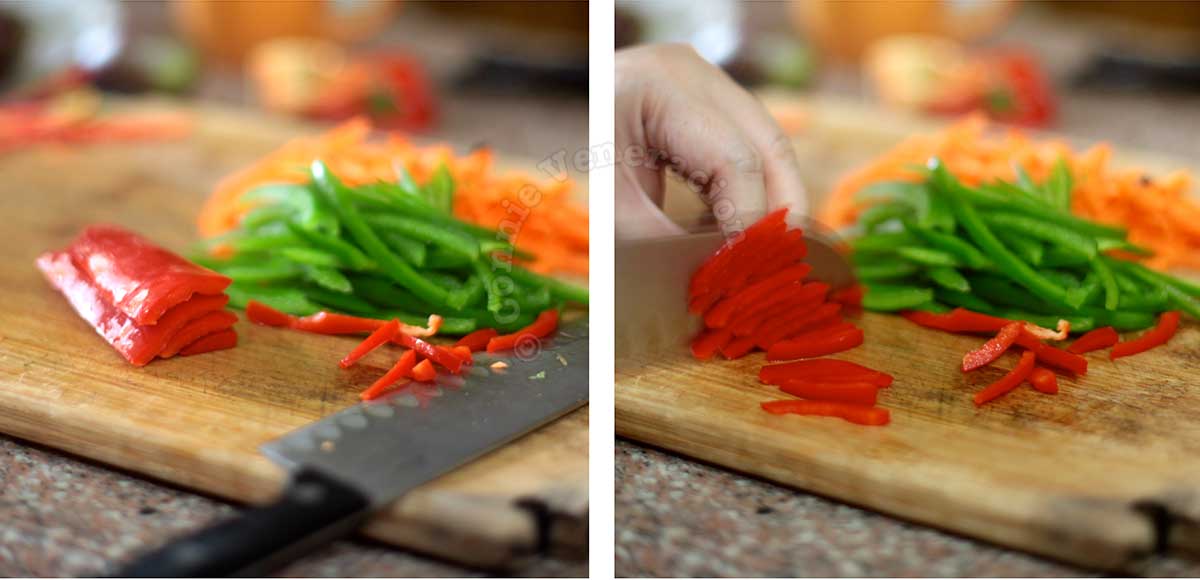
Some vegetables, like bell peppers, cannot be sliced the way you would carrots and eggplants. You need to core it first by removing the seeds and white pith. Then, you cut into manageable and uniform portions, stack and cut into matchsticks.

